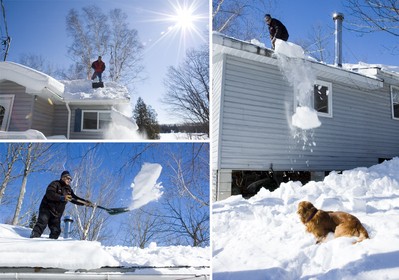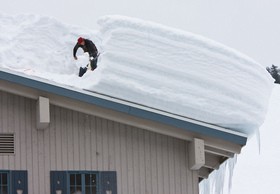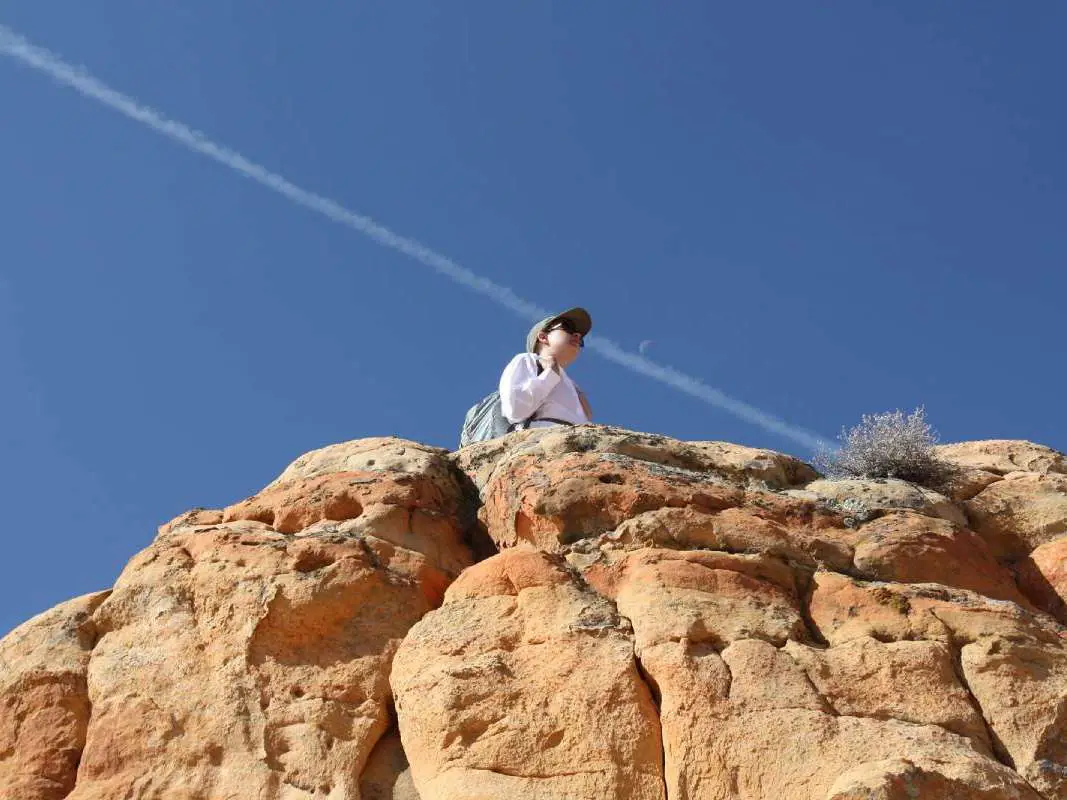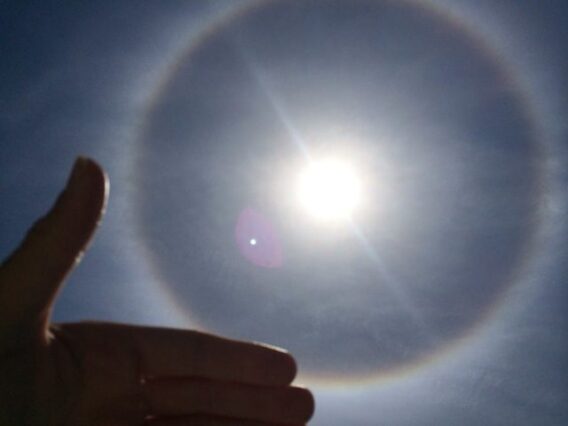Every winter somewhere in this country an unusually heavy snowfall will result with some buildings collapsing under the extreme weight of snow accumulating on the roof.
Though the nightly news may only converge on large industrial or commercial buildings that buckle under the stress, this is indeed a concern that every homeowner needs to take seriously.
Living in Duluth, Minnesota we are very familiar with heavy snowfall.
Surprisingly, even here — where we expect extreme accumulations of snow — occasionally a structure will fail and collapse.
After the first foot of snow has fallen, I start monitoring my roof as I don’t want to let it build up beyond about that 12-inch mark. Often with sunny weather, the snow will melt away. But every couple years or so, it will stick around until I’m forced to head on up on the roof with my snow shovel and clear it away.
How To Remove Snow From A Sloped Roof
Removing snow should be done very cautiously. Not only is snow shoveling a very strenuous activity, there is also great danger of damaging the roof surface itself and creating more problems than what the snow itself presents.
The majority of sloped roofs are shingled with asphalt shingles and if treated too aggressively, they will either break away, or their lifespan will be shortened. Not only must you use care with your snow removal methods, it’s also wise to choose your snow removal tools wisely.
Metal tools are more likely to catch and damage shingles, especially if they have ragged edges. I use an aluminum scoop shovel like this one to clear my roof. But to make sure I don’t damage shingles, I try to remove snow down to the point there is still an inch or so left on the roof. By not scraping the roof clean, the gravel surface of the shingles won’t be scraped away and the roof will live out its expected lifespan intact. That last bit of snow will melt away the first sunny day that comes along, as the dark surface of the shingles will absorb the heat of the sun.
Plastic tools like these plastic snow shovels are much less likely to catch on shingles and do damage. However, stay away from the curved sidewalk type of shovel that’s designed to be pushed across a surface to move the snow away. This type will damage your roof’s shingles.
Snow rakes are often used to remove snow from roofs as well. A snow rake has a blade, or cutter, that is attached to a long pole allowing you to remain on the ground as you pull sections of snow from a sloped roof surface. This works great on a garage or single floor ranch style home.
Here’s a video of 2 different roof rakes being compared side by side:
How To Remove Snow From A Flat Roof
Flat roofs are just a lot of work to keep clean, period. Finding some young strong physically fit men to do the job is well worth the expense.
This video clearly shows that shoveling is hard work:
Snow Usually Slides Right Off Metal Roofs
Of course if you’re very lucky, you may have a metal roof, so when the heat of the sun hits it, the snow just slides right off.
This video of a self-cleaning roof shows how Mother Nature does the work for you:
The Dangers Of Rooftop Snow & Ice Removal
When clearing snow from the roof of a multi-story home, it may be best to hire professionals. The danger of serious injury (or death) is always present when working at heights, and when dealing with snow it’s even more dangerous. One wrong move and you could slip and go over the side before you have a chance to do anything about it.
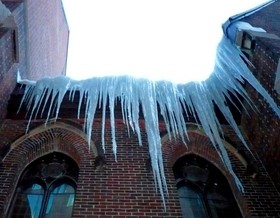 Also, watch out for ice hanging off the edge of your roof. Weighing hundreds of pounds, a large icicle can easily kill anyone unfortunate enough to be struck should it break loose and fall to the ground.
Also, watch out for ice hanging off the edge of your roof. Weighing hundreds of pounds, a large icicle can easily kill anyone unfortunate enough to be struck should it break loose and fall to the ground.
How ever you decide to remove the snow on your roof, please use care and always remember safety first. Have someone outside with you. That way, in case of an accident, someone will be there to get help.
Check out these tips for dealing with dangerous icicles.
I’ve been involved in RVing for 50 years now — including camping, building, repairing, and even selling RVs. I’ve owned, used, and repaired almost every class and style of RV ever made. I do all of my own repair work. My other interests include cooking, living with an aging dog, and dealing with diabetic issues. If you can combine a grease monkey with a computer geek, throw in a touch of information nut and organization freak, combined with a little bit of storyteller, you’ve got a good idea of who I am.

